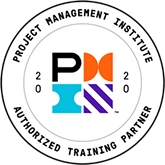Enterprise Alignment
The  greatest challenge facing businesses today is the unrelenting pace of change. Every organization wants to improve its ability to respond rapidly, dynamically and economically to market forces. Well-defined processes are the key to becoming a more responsive and adaptable enterprise. In a process-centric organization, processes are integrated holistically, are well designed and visible to management, and are measured and managed against corporate strategy and goals. Process-centric companies have well defined processes that are horizontally and vertically aligned, are well governed, and produce cost-effective and reliable outcomes. Business Process Management (BPM) provides a comprehensive system for improving processes, aligning business processes with business goals and assuring underlying IT applications, human competency and organization designs support the process performance objectives.
greatest challenge facing businesses today is the unrelenting pace of change. Every organization wants to improve its ability to respond rapidly, dynamically and economically to market forces. Well-defined processes are the key to becoming a more responsive and adaptable enterprise. In a process-centric organization, processes are integrated holistically, are well designed and visible to management, and are measured and managed against corporate strategy and goals. Process-centric companies have well defined processes that are horizontally and vertically aligned, are well governed, and produce cost-effective and reliable outcomes. Business Process Management (BPM) provides a comprehensive system for improving processes, aligning business processes with business goals and assuring underlying IT applications, human competency and organization designs support the process performance objectives.
Within the BPM community there are two constituencies, both using the term “BPM.” One constituency uses the term to refer to changing the way processes are designed, managed and measured. The other uses the term “BPM.” to refer to IT efforts to create and install BPM systems, including the development of rule-based systems, automated process monitoring systems, and software standards.
It is a good thing that IT is developing a new generation of software tools that make it easier for IT to align its applications and databases with business processes. BPM software products have the potential to significantly improve a company’s performance, and efforts to organize IT developments in ways that align and support business processes is a major step forward in managing IT.
 However, the more important issue is getting business organizations to embrace a process-centric approach to management. To be a process centric company a company needs to master and integrate all of the process elements within the organization and overcome the gap that lies between those interested in the human aspects of process change and those interested in the automation of processes.
However, the more important issue is getting business organizations to embrace a process-centric approach to management. To be a process centric company a company needs to master and integrate all of the process elements within the organization and overcome the gap that lies between those interested in the human aspects of process change and those interested in the automation of processes.
If your company is to become process-centric you need to develop a central business process architecture that ties corporate strategy to both human and IT implementation. Senior managers need to invest the time in developing the business process architecture, they need to monitor the performance of the processes defined in the architecture and they need to set priorities and manage the processes and the people engaged in all levels of process change. When this occurs you will have built business process right into the fabric of your organization, assuring that your company’s people and processes are aligned to improve organizational performance.
Everyone interested in reaping the multiple proven benefits of a process centric approach to business process change needs to reach out to others and define BPM as broadly as possible. To assure this happens we need to work together to assure that BPM embraces all possible process change efforts.
About the Author
 Celia Wolf is Founder and Managing Director of BPTrends Associates (BPTA), a professional services company that provides training and consulting services to organizations interested in understanding and implementing Business Process Management (BPM) solutions. The Corporate Education Group has partnered with BPTA to provide the BPTA BPM Curriculum to individuals and organizations seeking BPM training. In addition to her work with BPTA, Celia is also Founder and CEO/Publisher of BPTrends (www.bptrends.com), the most trusted source of information and best practices in BPM.
Celia Wolf is Founder and Managing Director of BPTrends Associates (BPTA), a professional services company that provides training and consulting services to organizations interested in understanding and implementing Business Process Management (BPM) solutions. The Corporate Education Group has partnered with BPTA to provide the BPTA BPM Curriculum to individuals and organizations seeking BPM training. In addition to her work with BPTA, Celia is also Founder and CEO/Publisher of BPTrends (www.bptrends.com), the most trusted source of information and best practices in BPM.
For more information on this topic, as well as how Corporate Education Group can help power your organization’s performance, contact us via email or call 1.800.288.7246 (US only) or +1.978.649.8200. You can also use our Information Request Form!



